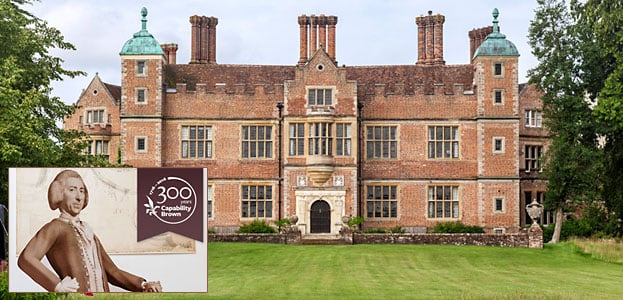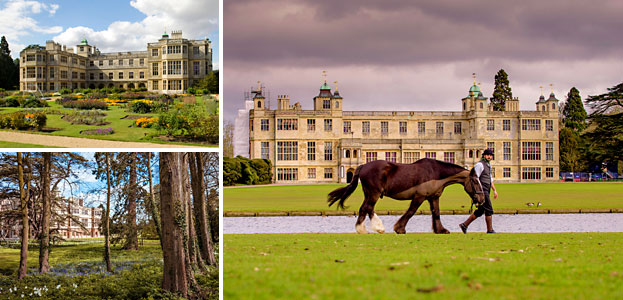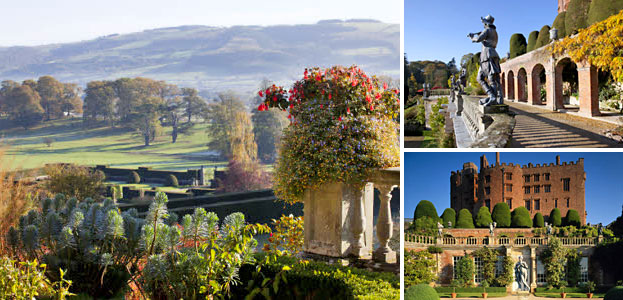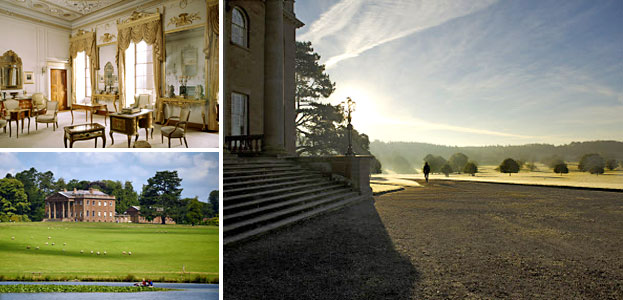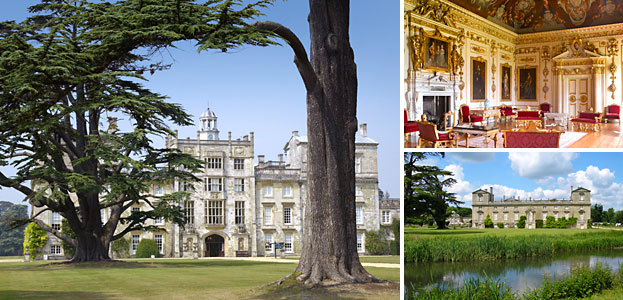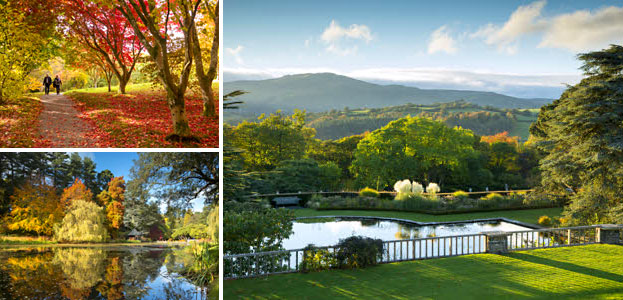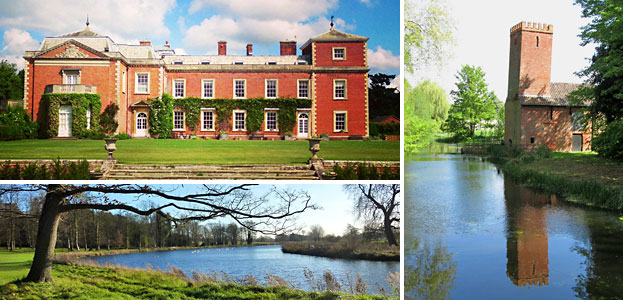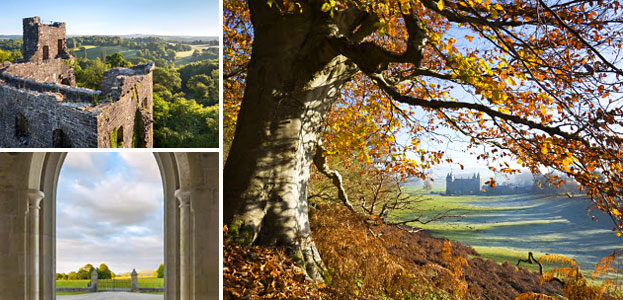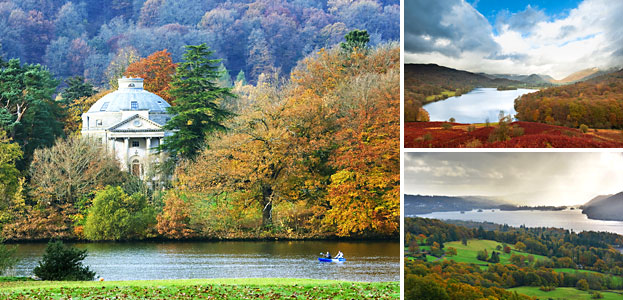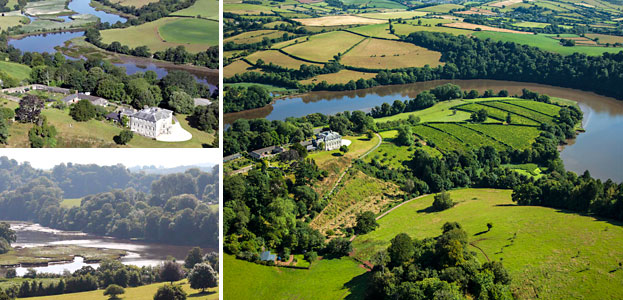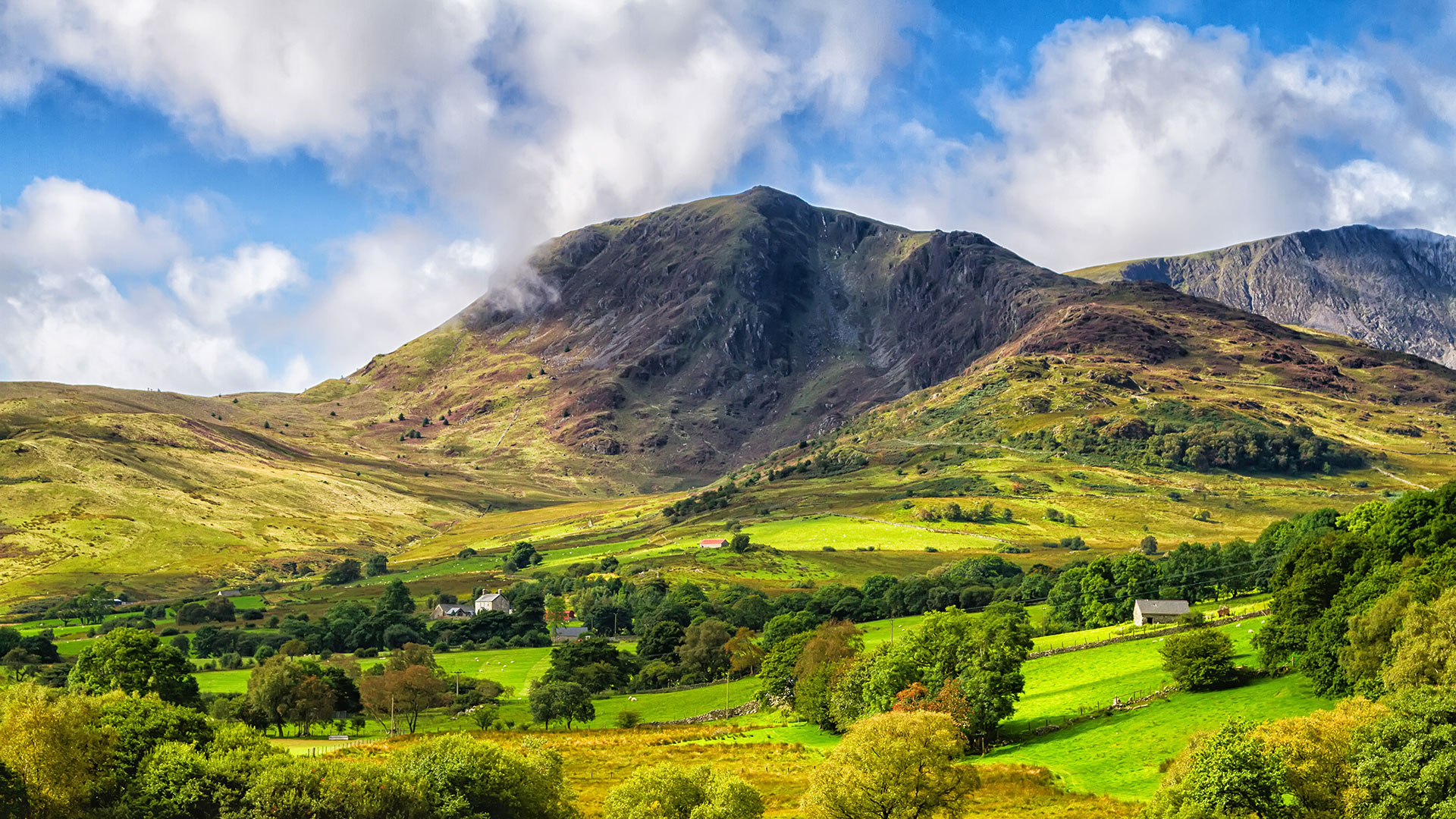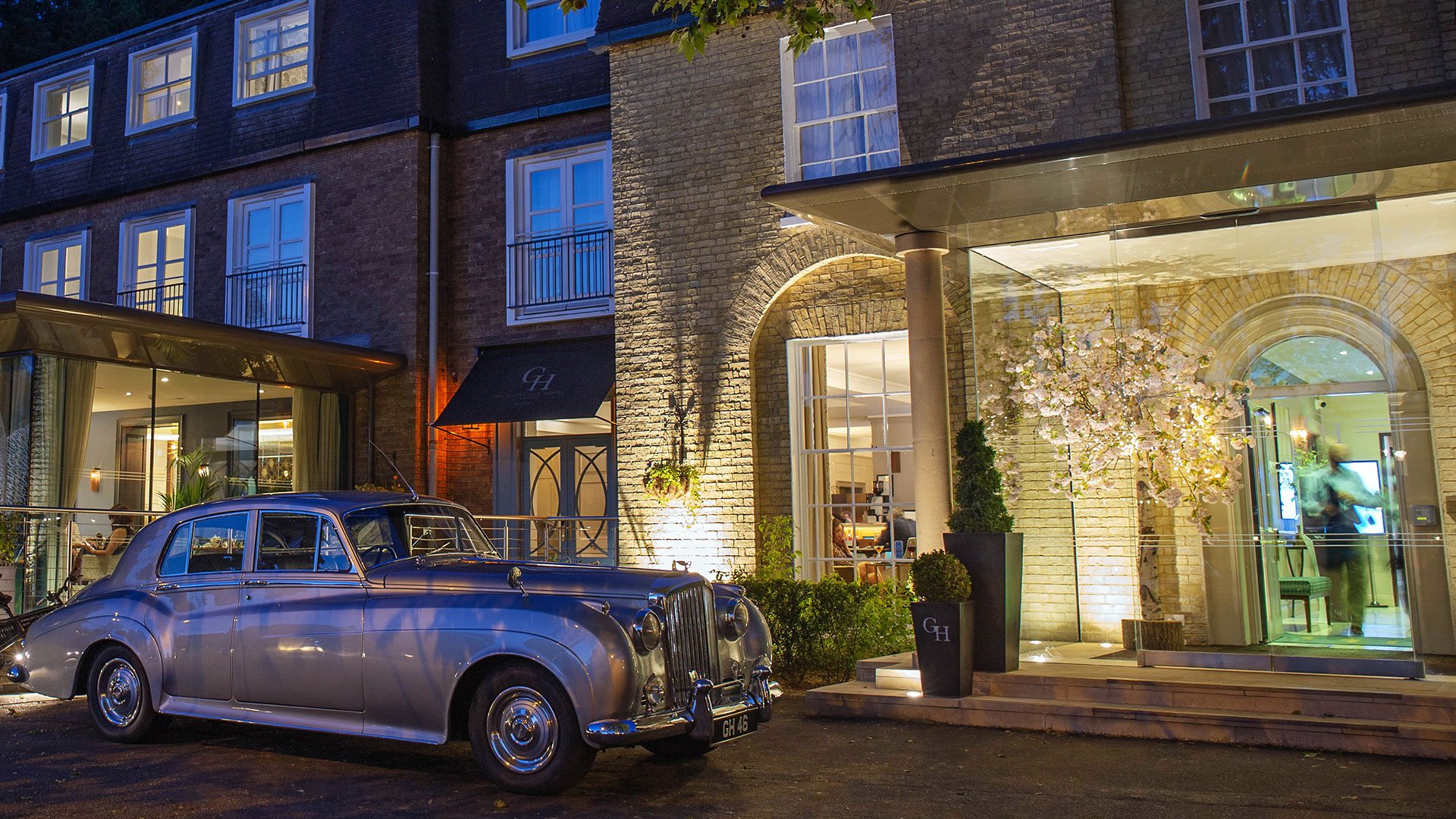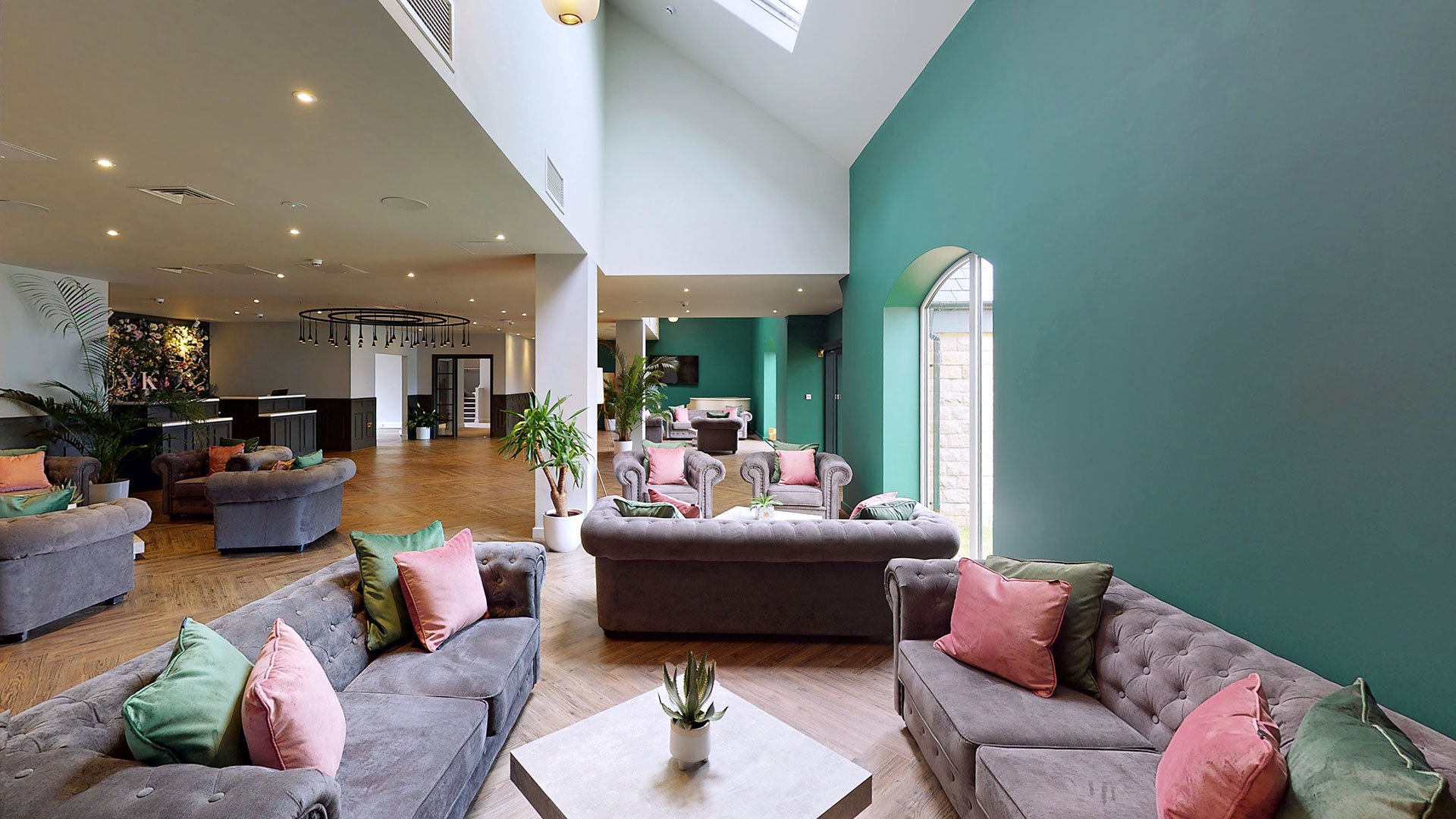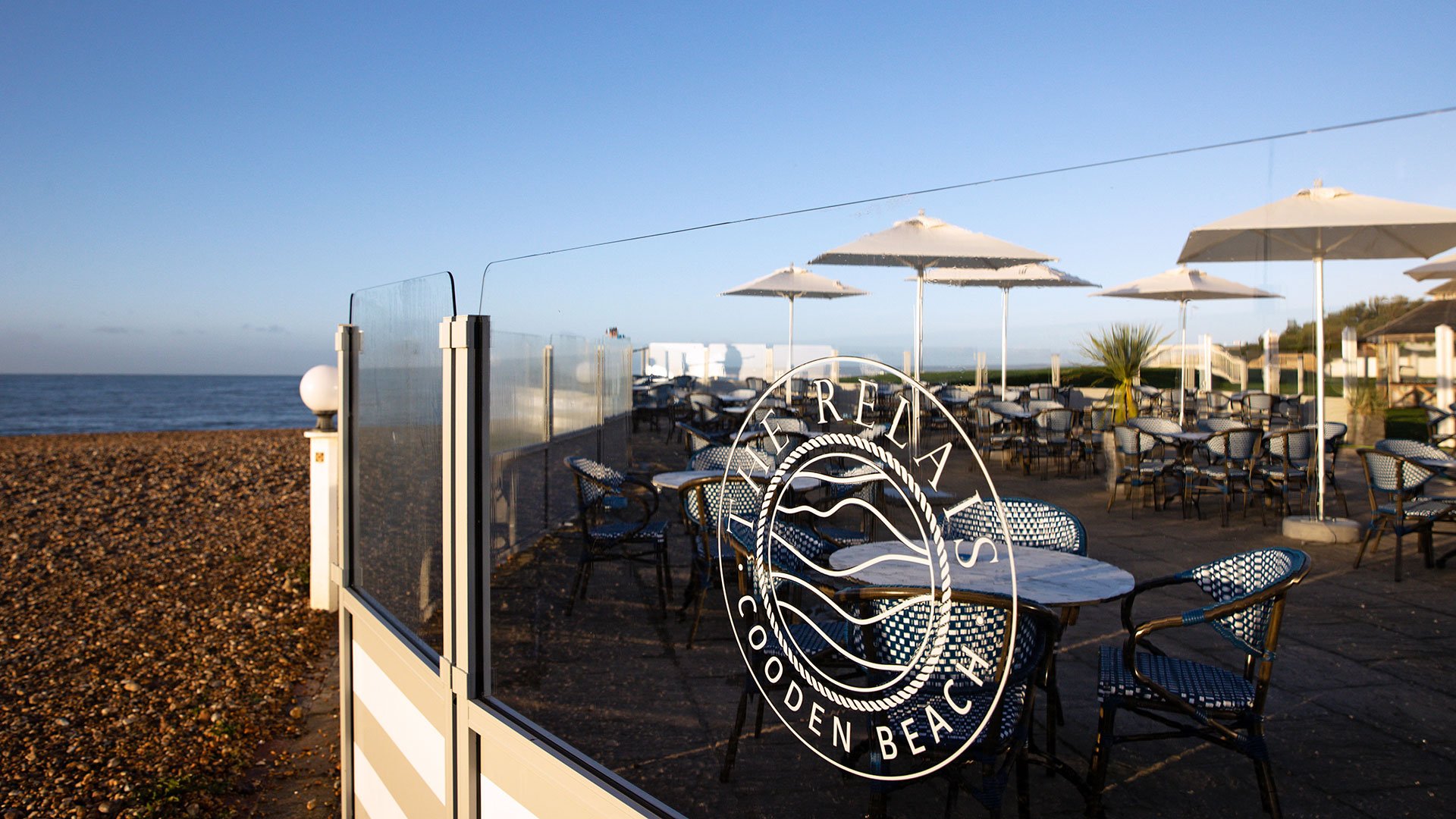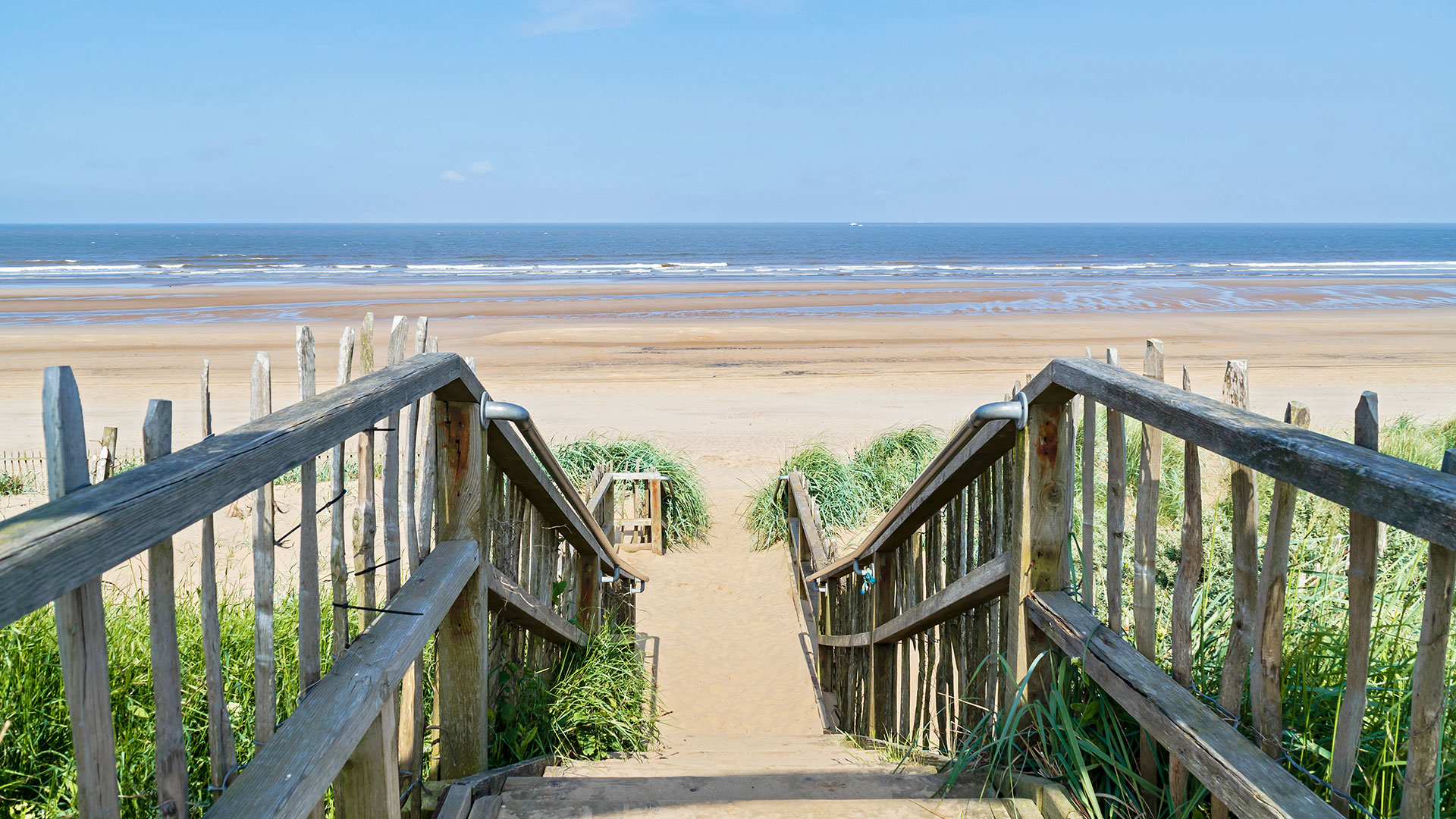“Go you and adorn England” – Prime Minister William Pitt ‘the Elder’ to Lancelot ‘Capability’ Brown (Brown’s legacy was to stretch much further; it would adorn the world.)
Bland, repetitive and dull. There were those who did not care for the bold, flowing lines of the ‘Brownian’ landscape, which epitomised the English countryside tamed by man, appearing both natural and uncanny…
Sure, the ‘Shakespeare of gardening’ had his admirers, but, like all pioneering talents and creative geniuses, he also attracted criticism.
Lancelot Brown (1716-83) – often just referred to as ‘Capability’ Brown on account of his tendency to remark that the grounds of prospective clients held ‘great capabilities’ – created thousands of English Landscape Gardens during his lifetime.
In Capability Brown (2016), garden historian and Kew-trained gardener Sarah Rutherford ventures that the “English Landscape Garden is arguably the greatest contribution Britain has made to the visual arts worldwide”1. It is highly significant then that Brown is widely regarded as its most talented and prolific exponent.
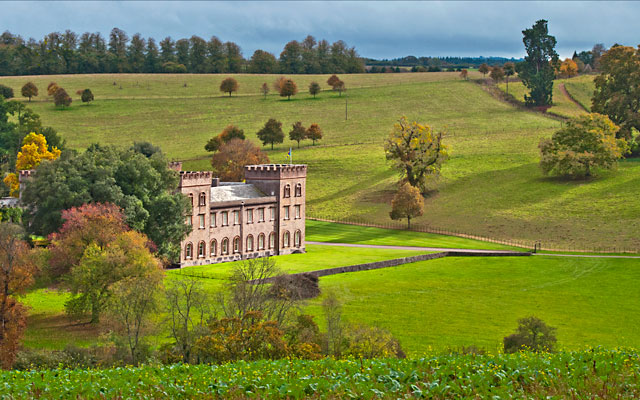
The innate appeal of Brown’s subtle artistry, coupled with his staggering output and memorable soubriquet, is for Rutherford the key to his fame. Brown did not invent the English Landscape Garden (Brown, like Shakespeare, was a visionary product of his time), but he did popularise it with enormous success.
The radical thing about his [Brown’s] landscape gardens was to sweep away the formal garden rooms, straight canals, pools and avenues, and set out instead smooth, sinuous lines, open sweeps of parkland and swooping lines of lakes and rivers. All was revealed in one majestic panorama, unfolded one view at a time as the visitor passed through it2
And so, to celebrate the final stretch of the 300th anniversary of the birth of ‘Capability’ Brown, we take a brief, awe-inspired look (and, this autumn, our focus is very much on seeing) at 10 gardens created, influenced, or simply in the spirit of revolt against formalism, by the man proclaimed as ‘England’s greatest gardener.’ You won’t find Stowe or Blenheim in this article, but there should be plenty of gems you recognise and, hopefully, some surprises, too…
Ugbrooke House and Gardens © 2016 Ugbrooke House
Masterpiece #1: Chilham Castle, Kent
Gardens: limited opening times
Chilham Castle is a private home whose garden and grounds are often open to the public. In the 1700s, the owner Thomas Heron “enlarged the park and redesigned the grounds with the help of Lancelot ‘Capability’ Brown”3. Brown first visited Chilham in 1777, and whilst the grounds have been altered since his involvement, there remain specimen trees that he planted in key positions4. Brown generally chose deciduous native trees in his designs, clothing the park sward in “singles, clumps and copses to frame views, screen unwanted scenes, provide shade and emphasise land form”5. The same natives were often used from pleasure ground to parkland, giving the impression of one segueing into the other. A splendid Jacobean country house now stands on the site of the ruined castle.
Where to stay: Hythe Imperial Hotel, Golf & Spa
In the coastal market town of Hythe (one of the Cinque Ports), surrounded by the Kent Downs Area of Outstanding Natural Beauty and Kent’s heritage coast.
(Chilham Castle is a 30-minute drive from the Hythe Imperial Hotel.)
Masterpiece #2: Audley End House, Essex
Gardens: open year-round
This famous Jacobean mansion in the Essex countryside features gardens originally created by two of the 18th Century’s most influential architects – ‘Capability’ Brown and Robert Adam (1728-92). Brown remodelled the grounds in the 1760s – sweeping away the formal gardens – with a serpentine lake and natural planting. His simple palette is enlivened by Adam’s garden buildings, including the Temple of Victory on Ring Hill and a three-arched Palladian bridge thrown over the artificially widened River Cam. Each building or ‘eye-catcher,’ such as a rotunda or even the country house, punctuates and is framed by the landscape, standing out in relief, and acts as both a viewpoint (framing the view across the park to the mansion) and focal point (drawing the eye from the mansion across the pleasure grounds). “The Temple of Victory at Audley End was framed by woodland in a gap so that it stood out against the sky on top of a ridge”6.
Where to stay: Stoke by Nayland Hotel, Golf & Spa
In the Dedham Vale Area of Outstanding Natural Beauty, on the Suffolk/Essex border, made famous by landscape master John Constable.
(Audley End is a 1-hour drive from Stoke by Nayland Hotel.)
Masterpiece #3: Powis Castle, Mid Wales
Garden: open year-round
You can count ‘Capability’ Brown’s work in Wales that is open to the public on one finger; that’s not to say, however, that his influence didn’t extend to this land of majestic spires and conquering castles. Indeed, the internationally renowned gardens at Powis Castle is but one example of his deeply, though indirectly, felt presence in Wales. Best known for their late-17th-Century to early-18th-Century Italianate terraces, in 1771 William Emes (1729/30-1803) was employed by the 1st Earl of Powis (second creation) to bring the estate into contemporary fashion. A rival to Brown in the Midlands and Wales, Emes “planted a ridge – the Wilderness – to the south of the Castle, which enclosed the terraces and the Dutch water garden, planting many of the fine oaks that survive to this day”7. During his professional life, Emes implemented some of Brown’s suggestions, either entirely or in part.
Where to stay: Lake Vyrnwy Hotel & Spa
On the banks of Lake Vyrnwy, in a National Nature Reserve, Mid Wales. (Powis Castle is a 45-minute drive from Lake Vyrnwy Hotel.)
Masterpiece #4: Berrington Hall, Herefordshire
Gardens: limited opening times
A house of firsts and finales, such is Berrington Hall. Architect Henry Holland’s first mansion and Brown’s last landscape commission. Notable ‘Brownian’ features include Holland’s triumphal arch gateway; the spectacular column-framed views towards Wales from the tetrastyle portico; the 15-acre lake (built to appear as an endless, sinuous river); and the original ha-ha (sunken wall): “essential in extending the view beyond the pleasure ground over the park and hiding boundaries. It defined the English Landscape Garden and Brown was a master of its use”8. Berrington is particularly remarkable in that Brown worked with Holland (his son-in-law) to create a 400-acre sylvan scene from scratch. Brown’s final design, influenced by the more rugged Picturesque, “warmly embraced the wider Herefordshire landscape”9.
Where to stay: Brooks Country House
In the Wye Valley Area of Outstanding Natural Beauty, at the gateway to the Royal Forest of Dean, Herefordshire.
(Berrington Hall is a 1-hour drive from the Brooks Country House.)
Masterpiece #5: Wilton House, Wiltshire
Gardens: limited opening times
This elite stately home’s grounds play second fiddle to its Inigo Jones staterooms (the magnificent Double Cube Room is pictured below). Nevertheless, its 21 acres of landscape parkland is the result of the move toward a naturalistic style of landscape design in 18th-Century England. Brown was to advise at Wilton in 177910,11. Indeed, the 9th Earl of Pembroke (better known as the ‘architect Earl’) had the garden by French-born Isaac de Caus altered, creating a serpentine park embellished with England’s first Palladian bridge.
Where to stay: Milford Hall Hotel & Spa
In the heart of the medieval cathedral city of Salisbury, Wiltshire.
(Wilton House is a 20-minute drive from Milford Hall Hotel.)
Masterpiece #6: Bodnant Garden, North Wales
Garden: open year-round
Situated above the River Conwy, looking out across the valley towards the Snowdonia range, Bodnant Garden is a world-class horticultural gem. A garden of two halves, the upper half consists of terraced gardens and lawns, while the lower portion contains the wild garden. Bodnant’s founder, Henry Pochin (1824-95), had the garden redesigned in deference to the doyen of wild gardening, William Robinson (1838-1935). Wild gardening sought to achieve a naturalistic alternative to the high “Victorian obsession with bedding out (‘geometrical gardening’)”12, which echoed the landscape revolution in Georgian England, a reaction against formalism. Today, in the dell, visitors can admire nature’s fireworks ablaze across the many UK Champion Trees, including American and Asian conifers planted by Pochin.
Where to stay: The Imperial Hotel
On the promenade of Wales’ premier seaside resort, Llandudno, North Wales. Interestingly, Pochin had a residence in Llandudno, at Haulfre (freely open to the public), on the Great Orme, where he pursued his passion for gardening. (Bodnant Garden is a 15-minute drive from the Imperial Hotel.)
Masterpiece #7: Euston Hall, Suffolk
Gardens: limited opening times
Eminent landscape architect William Kent (1685-1748) was employed at Euston Hall in the late 1730s. Its park is one of only seven surviving Kentian landscapes in Britain. Kent’s octagonal Palladian temple (akin to his earlier work at Stowe, where Brown was appointed head gardener) was originally used as a banqueting house. Brown (Kent’s successor) also worked at Euston Hall between 1769 and the 1780s13, where he created landscapes accented by weirs, pools and rivers. Indeed, Brown was “responsible for the serpentine Broadwater in the pleasure grounds. A weir directs water from the river into the 2-kilometre-long Broadwater with its central island [….] linked by a vista through the trees back to the Hall”14. Water, lakes in particular, feature at many of Brown’s iconic sites (most famously at Blenheim). More than a silvery mirror, water also reflected the owner’s wealth and power. In 2013, the waterways at Easton Hall were restored to resemble Brown’s original designs.
Where to stay: Hintlesham Hall Hotel
Near the historic waterfront town of Ipswich, Suffolk. (Euston Hall is a 45-minute drive from Hintlesham Hall Hotel.)
Masterpiece #8: Dinefwr, South Wales
Park: open year-round
Brown’s work was principally confined to England. Dinefwr is one of only a handful of exceptions. This Welsh stronghold comprises a National Nature Reserve, Newton House and an 18th-Century landscape park. The only parkland National Nature Reserve in Wales, the variety of habitats on this 800-acre estate is impressive. Dense woodland is home to some of the oldest trees in Britain (oaks aged over 400 years). Follow the picturesque ‘Capability’ Brown trail through the medieval deer park. The 1.5-mile-long circuit walk was designed by Brown himself when he visited Dinefwr in 1775. Indeed, specimen trees seen along the way were planted at his suggestion. Breaks in the trees allow for views (back to the house) to unfurl as if by magic and the atmospheric medieval ruins of Dinefwr Castle are utilised to full effect.
Where to stay: Gliffaes Country House Hotel
In the Brecon Beacon National Park, on the banks of the River Usk at the gateway to the Black Mountains, South Wales.
(Dinefwr is a 1-hour drive from Gliffaes Country House Hotel.)
Masterpiece #9: Belle Isle on Windermere, Lake District
Island: closed (private)
Thomas White (1739-1811) was a Shropshire man who started out working as a foreman for Brown at Temple Newsam, Yorkshire, before parting company to work as a surveyor at nearby Harewood. Like Brown, White’s jobs often stretched over long periods, such as Belle Isle on Windermere (1783-96), “which included plantations on the mountain sides above the lake. He may also have landscaped the renowned Claife Station, a tourist viewing station on a rock overlooking Belle Isle”15. The perimeter of the island was thickly planted with trees (especially the north and south ends), with the interior planted with single trees and scattered clumps16. White’s tree planting achievements were later recognised by the Royal Society of Arts. His mastery of tree planting was most probably informed by Brown’s own genius for placing trees in a landscape.
Where to stay: Lindeth Howe Country House Hotel
In the Lake District National Park, commanding views of Lake Windermere to the Cumbrian fells beyond, Cumbria.
(You can hire a boat from Bowness Bay Marina and row or sail yourself around the central islands. Please note that Belle Isle is privately owned; please do not attempt to land on it.)
Masterpiece #10: Sharpham Estate, South Devon
Gardens: open year-round
A question mark floats serenely over the 550-acre Sharpham Estate, where a Grade I listed Palladian mansion overlooks the River Dart. Sharpham is a stunner, but the commission is not listed in Brown’s single surviving business account book. This, however, does not preclude Sharpham from being a ‘Brown’ – his account book does not provide a complete record of all his commissions in the period it covers17. ‘Brownian’ in style and with a very wealthy owner, it is entirely conceivable that Sharpham was designed by Brown himself18.
Where to stay this autumn: Dartington Hall Hotel
On the banks of the River Dart, South Devon. (Sharpham Estate is a 20-minute drive from Dartington Hall Hotel. For ‘Capabilitites,’ Ugbrooke is a 30-minute drive.)
During his lifetime, Lancelot ‘Capability’ Brown, the omnipotent magician, seemed to conjure up pastoral landscapes from air heavy with Dame Nature’s eloquence, but Brown’s genius lay in envisioning and realising the unique ‘capabilities’ of a site. Like a master safe-cracker, he unlocked each landscape in a singular fashion. Imitated but inimitable. There is only one ‘Capability’ Brown.
We may not all stand amid nature’s blank canvas and see a work of art, but we can all enjoy the creative genius of ‘England’s greatest gardener’ with an escape to the doorstep of one of Britain’s finest parks and gardens.
Share this post with your family and friends. Start planning your next great British adventure…
(To avoid disappointment, please check house, garden and park opening times before booking your autumn escape.)
Notes:
1 Rutherford, Sarah. Capability Brown and His Landscape Gardens (London: National Trust Books-Pavilion Books, 2016) 7. Print. 2 Rutherford 8. 3 Chilham Castle. History of the Gardens. Chilham Castle. 2016. Web. 07 Oct. 2016. 4 Kent Gardens Trust. Capability Brown. Kent Gardens Trust. 2016. Web. 07 Oct. 2016. 5 Rutherford, Sarah. Capability Brown and His Landscape Gardens (London: National Trust Books-Pavilion Books, 2016) 124. Print. 6 Rutherford 102. 7 National Trust. The beginnings of Powis’ unique gardens. National Trust. 2016. Web. 07 Oct. 2016. 8 Rutherford 110. 9 Rutherford 186. 10 Rutherford 25. 11 Rutherford 76. 12 Buchan, Ursula. William Robinson: How the wild child of Victorian Britain came of age. The Telegraph. 2008. Web. 07 Oct. 2016. 13 Euston Hall. Euston Hall: The waterways and the watermill. Easton Hall. 2015. Web. 07 Oct. 2016. 14 HHA Capability Brown Sites. Euston Hall, Suffolk. Historic Houses Association. 2015. Web. 07 Oct. 2016. 15 Rutherford, Sarah. Capability Brown and His Landscape Gardens (London: National Trust Books-Pavilion Books, 2016) 176. Print. 16 Parks and Gardens UK. Belle Isle, Windermere, Cumbria, England. Parks and Gardens UK. 2007. Web. 07 Oct. 2016. 17 Rutherford, Sarah. Capability Brown and His Landscape Gardens (London: National Trust Books-Pavilion Books, 2016) 51. Print. 18 Phibbs, John. “A list of landscapes that have been attributed to Lancelot ‘Capability’ Brown.” 2016. 33. PDF file.
Photo credits:
Audley End © 2016 English Heritage; Berrington Hall: i) Drawing room © 2016 National Trust Images / Nadia Mackenzie. ii) View from Barrington Hall © 2016 National Trust Images / John Millar. iii) View to Barrington Hall © 2016 National Trust Images / John Millar; Bodnant Garden © 2016 National Trust Images / John Miller; Dinefwr: i) View from Dinefwr Castle © 2016 National Trust Images / Andrew Butler. ii) View from Newton House © 2016 National Trust Images / Andrew Butler. iii) View to Newton House © 2016 National Trust Images / John Hammond; Euston Hall © 2016 Euston Hall; Powis Castle and Garden: i) Aviary terrace © 2016 National Trust Images / Mark Bolton. ii) Orangery © 2016 National Trust Images / Andrew Butler. iii) View from Powis Castle © 2016 National Trust Images / Mark Bolton; Sharpham Estate © 2016 Sharpham Trust; Wilton House © 2016 Wilton House.
